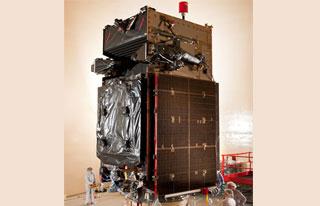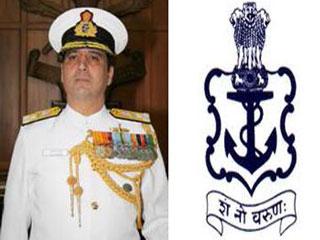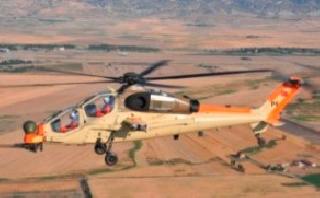
Lockheed Martin engineers preparing the second Space Based Infrared System (SBIRS) geosynchronous (GEO-2) satellite for acoustic testing at the company�s Sunnyvale, California, facility. Photo:
SUNNYVALE, CALIFORNIA (BNS): Lockheed Martin has successfully completed acoustic testing of the second Space Based Infrared System (SBIRS) geosynchronous (GEO-2) spacecraft.
The US Air Force’s SBIRS satellites provide the nation with significantly improved missile warning capabilities and simultaneously support other critical missions including missile defence, technical intelligence and battlespace awareness, according to the company news release.
"SBIRS GEO-2 is progressing very smoothly on the path to delivery, and successful acoustic testing of the space vehicle is indicative of the team’s increasing expertise in fielding SBIRS spacecraft," Col Scott Larrimore, Chief of the U.S. Air Force’s SBIRS Space Division, was quoted as saying in the news release.
Acoustic and pyroshock testing are among several critical environmental test phases that validate the overall satellite design, quality of workmanship and survivability during space vehicle launching and on-orbit operations.
During acoustic testing, the fully integrated GEO-2 spacecraft was paced through the maximum sound and vibration levels expected during launch into orbit.
GEO-2 will now undergo thermal vacuum testing, which will validate its performance at temperature extremes greater than those expected during on-orbit operations.
The first geosynchronous (GEO-1) SBIRS satellite was launched May 7, and has since reached orbit, deployed its instruments and activated its sophisticated infrared sensors.
GEO-1 is performing as expected, and is now undergoing early orbit testing. GEO-2 is on track to be delivered and available for launch in spring 2012.
 Previous Article
Previous Article Next Article
Next Article













The Indian Air Force, in its flight trials evaluation report submitted before the Defence Ministry l..
view articleAn insight into the Medium Multi-Role Combat Aircraft competition...
view articleSky enthusiasts can now spot the International Space Station (ISS) commanded by Indian-American astr..
view article